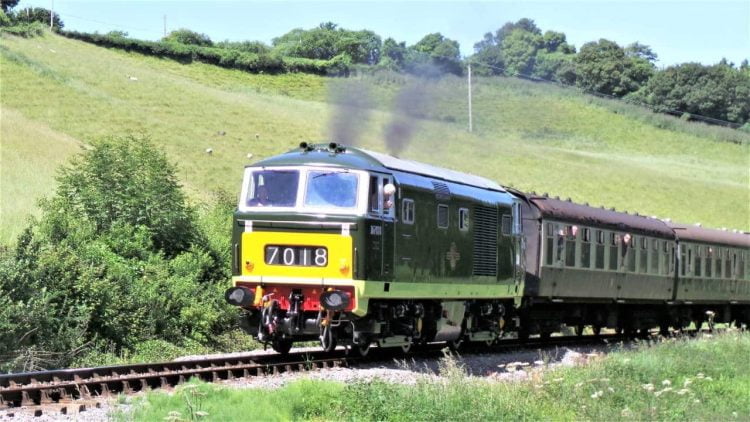This year’s Summer Diesel Festival at the West Somerset Railway has been declared a resounding success, with sales increasing by 10 percent compared to last year’s festival.
An annual event in the West Somerset Railway‘s calendar, this year the Festival took place from Thursday 6th to Saturday 8th June.
With an intensive timetable in operation, rarely used sections of the line between Bishops Lydeard and Norton Fitzwarren were used to maximise the mileage run by visiting and home fleet locomotives.
The increase comes on top of the 50 percent increase in visitors to the recent Spring Steam Spectacular.

Locomotives visiting the line from other heritage railways were Class 20 No. 20142 Sir John Betjeman, Class 20 No.20189, Class 24 No. D5054 ‘Phil Southern’, Class 46 ‘Peak’ No. D182 (46045), Class 50 ‘Hoover’ No. 50033 Glorious and a Great Western Railway HST.
Locomotives appearing from the railway’s home fleet included Class 09 No. D4107, Class 14 ‘Teddy Bear’ No. D9526, Class 33 ‘Crompton’ No. D6566, Class 33 ‘Crompton’ No. D6575 and Class 35 ‘Hymek’ No. D7017, as well as Class 03 No. D2133, which is owned by the Diesel Electric Preservation Group (DEPG).

Among the attractions at the Festival was a talk by British Rail’s former Fleet Manager at Laira Depot, Geoff Hudson, and the opportunity to experience running over the rarely used stretch of line between Bishops Lydeard and the Great Western West of England main line at Norton Fitzwarren.
Visitors could also tour the Diesel Electric Preservation Group’s depot at Williton, which was open.
The railway has received plenty of positive feedback about the Festival, and volunteers, staff, and visitors agreed that the atmosphere across the railway created by the Festival was fantastic.
Visitors intending to visit the railway in the next few weeks should note that there will be changes to the normal advertised services.
On Wednesday 25th and Thursday 26th June, services will only be running between Minehead and Williton.
On Tuesday 2nd and Wednesday 3rd July, services will only be running between Bishops Lydeard and Watchet.

The next major event at the railway is a week-long celebration from Tuesday, 16th to Sunday, 21st July to commemorate the 150th anniversary of the opening of the line from Watchet to Minehead.
A star of the week is sure to be Furness Railway No. 20, currently the oldest operational locomotive in the UK and built in 1863, just 11 years after the Watchet to Minehead part of the line opened.
No. 20 will prove a fine attraction alongside the UK’s newest main-line steam locomotive, the newly built Great Western Railway Grange Class 4-6-0 No. 6880 Betton Grange.
Huge thanks must go to the DEPG and the other owning groups for their support of this event. Also, to our gala planning team for another successful event and the staff from across the railway whom without their support, these events would not be possible.
Kerry Noble, West Somerset Railway General Manager






Responses
Very much part of our heritage now, I was only 9 years old when steam finished so for me I grew up with Diesels , for me it’s Diesels all the way
Could do with a better bus service to and from Taunton on gala days
Sorry just can’t get excited about diesels!
Yes, but other people do get excited.
Diesels come in many different shapes and sizes and are very much part of the railway history of the UK.
Many can